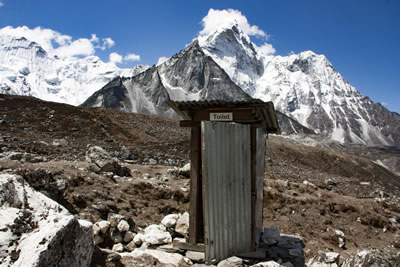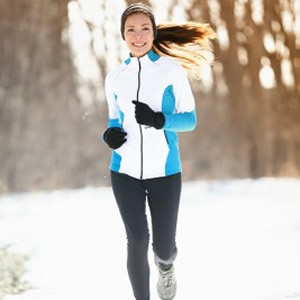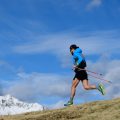How to Cope with Cold-Induced Diuresis
Let’s see if this sounds familiar. You decide to jump into a race during the winter as part of your training program. You prepare the same way you would for a summer race. But after you arrive at the race site in the morning and begin your warmup, you find yourself visiting the loo more often than usual—or, worse, you find yourself needing to take a pit stop during the middle of the race to relieve your bladder.
What’s going on here?
This is a phenomenon known scientifically as cold-induced diuresis, or cold diuresis. Diuresis—from the English prefix di- meaning “through” and the Greek root ourēsis meaning “urination”—refers to an increase in urination. This can be induced when exercising in cold weather. Why is that?

Scientists continue to investigate the physiological mechanisms that lead to cold diuresis, but the most widely recognized theory goes something like this. As the ambient temperature drops, your body conserves heat by shunting blood from the extremities to your core. This is achieved by constricting the blood vessels in your arms and legs (peripheral vasoconstriction), resulting in greater blood volume in the core. Overall, this leads to higher blood pressure. Sensing this increased hypertension, the kidneys respond by excreting excess fluid since removing fluid from the blood vessels reduces the blood pressure. That excess fluid goes into your bladder, creating the need to urinate.
There is some evidence that cold diuresis can be more pronounced if you are accustomed to exercising in warmer environments and then shift to a cold environment. I can attest to this. A few years ago, I was training in a relatively warm environment in the Middle East and flew to Toronto in the middle of a winter cold snap. I went outside the next morning for a frigid run along Lake Ontario and found myself stopping to pee every 20 minutes.
One way to prevent cold diuresis is to train more frequently in colder weather to acclimatize your body in advance. This can be beneficial if you plan to race in colder weather and don’t want to be burdened with the extra pit stops associated with cold diuresis.
Another strategy would be to limit your fluid intake before exercise. If you will be active outside for over an hour or more, be sure you have access to fluid replacement options so you can hydrate as needed once you are further into your workout or race.
Swimming can also lead to diuresis—but the water doesn’t necessarily need to be cold. When swimming, a different mechanism is often at play: hydrostatic pressure. As you swim, the water exerts a pressure on your body from all directions, acting somewhat like a whole-body compression suit. This pressure, as with cold diuresis, squeezes fluid from the extremities to the core where the kidneys respond, as you guessed, by excreting the excess fluid into your bladder.
It’s difficult to predict when or for whom cold diuresis may occur, given the many factors that go into producing the response. The key, as with anything in life, is to learn from your own experiences and adapt accordingly. Learn how your body responds to different weather situations and don’t be alarmed if you find yourself visiting the loo more often as you warm up for those cold weather races or workouts.







